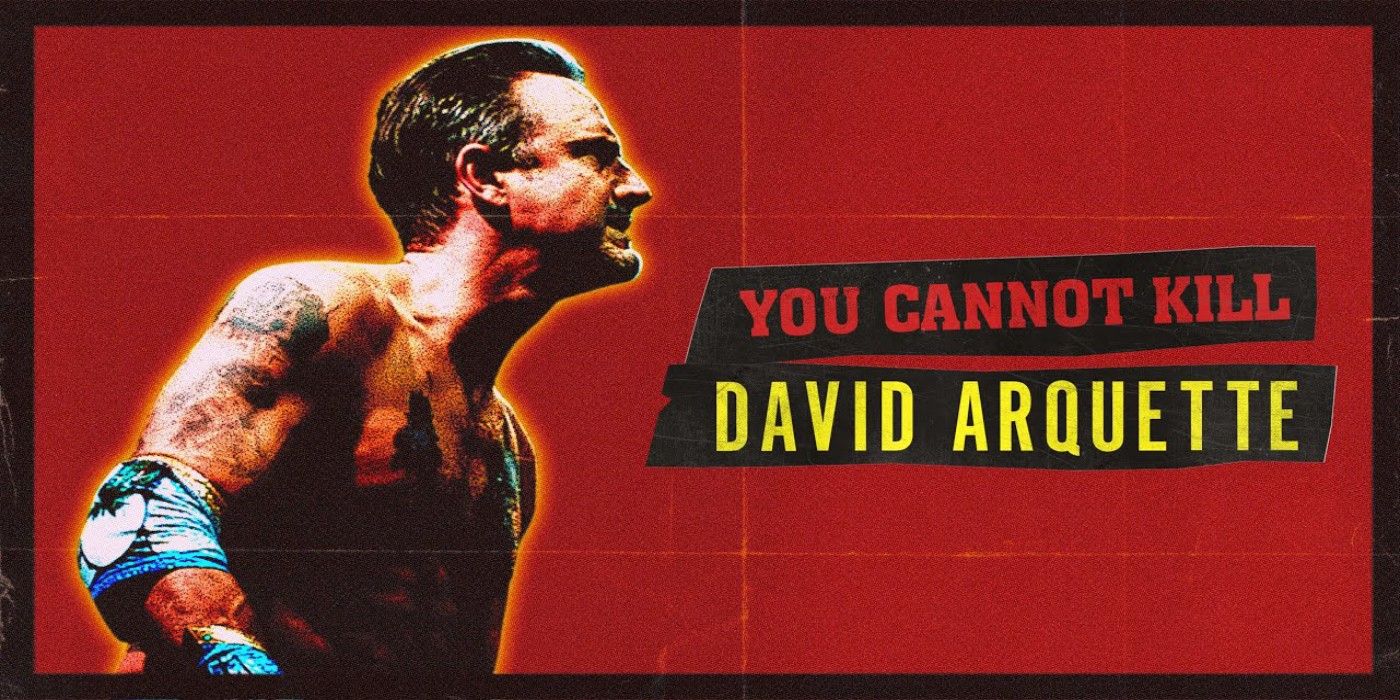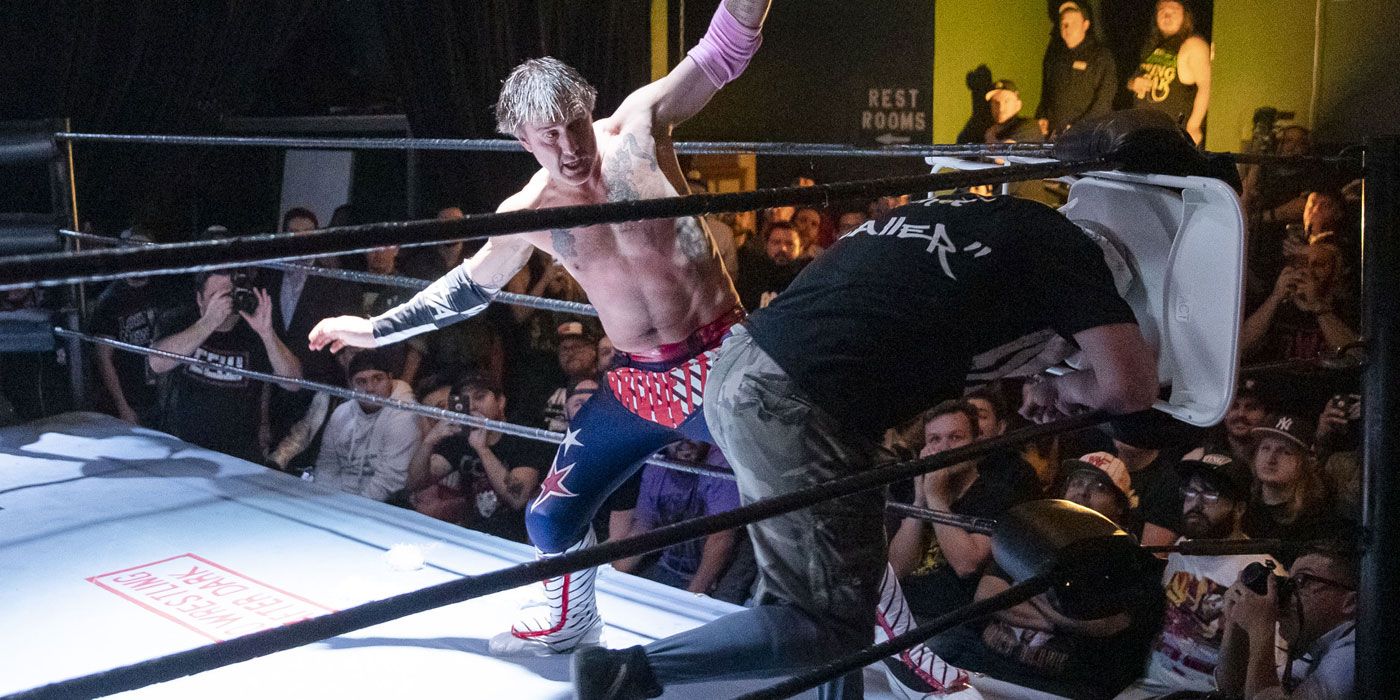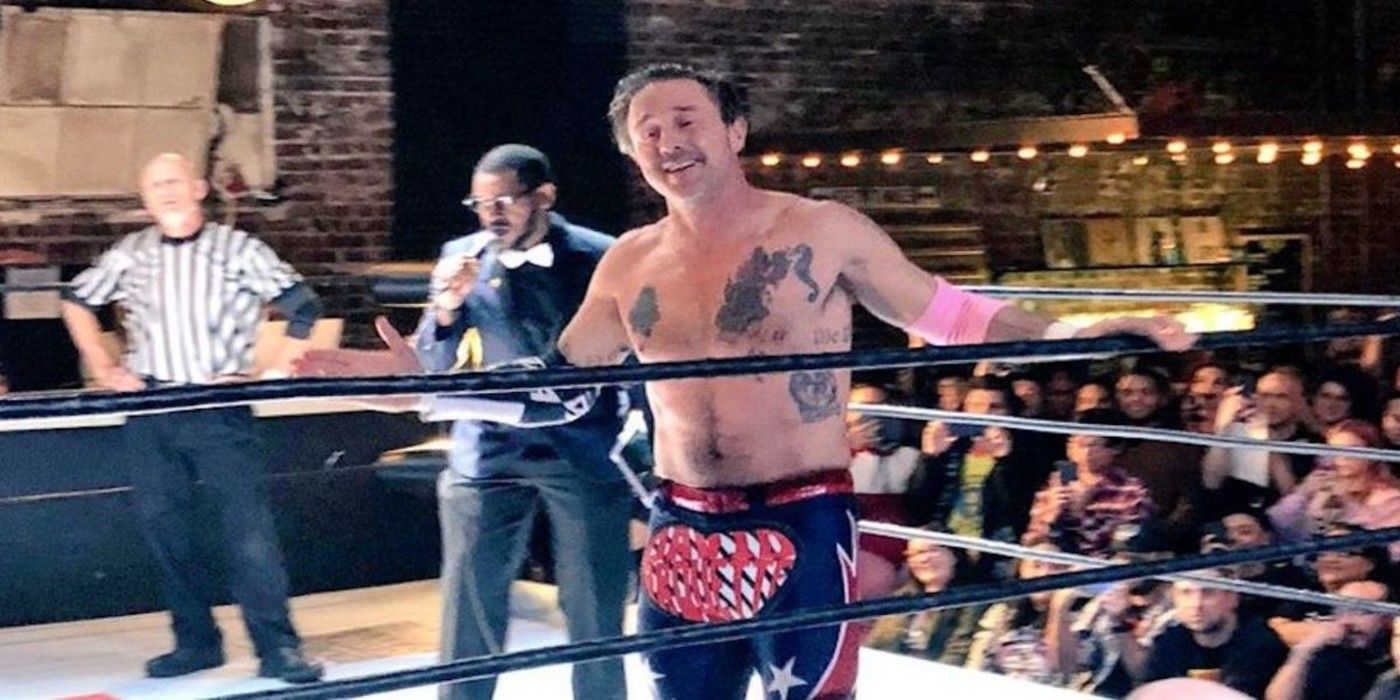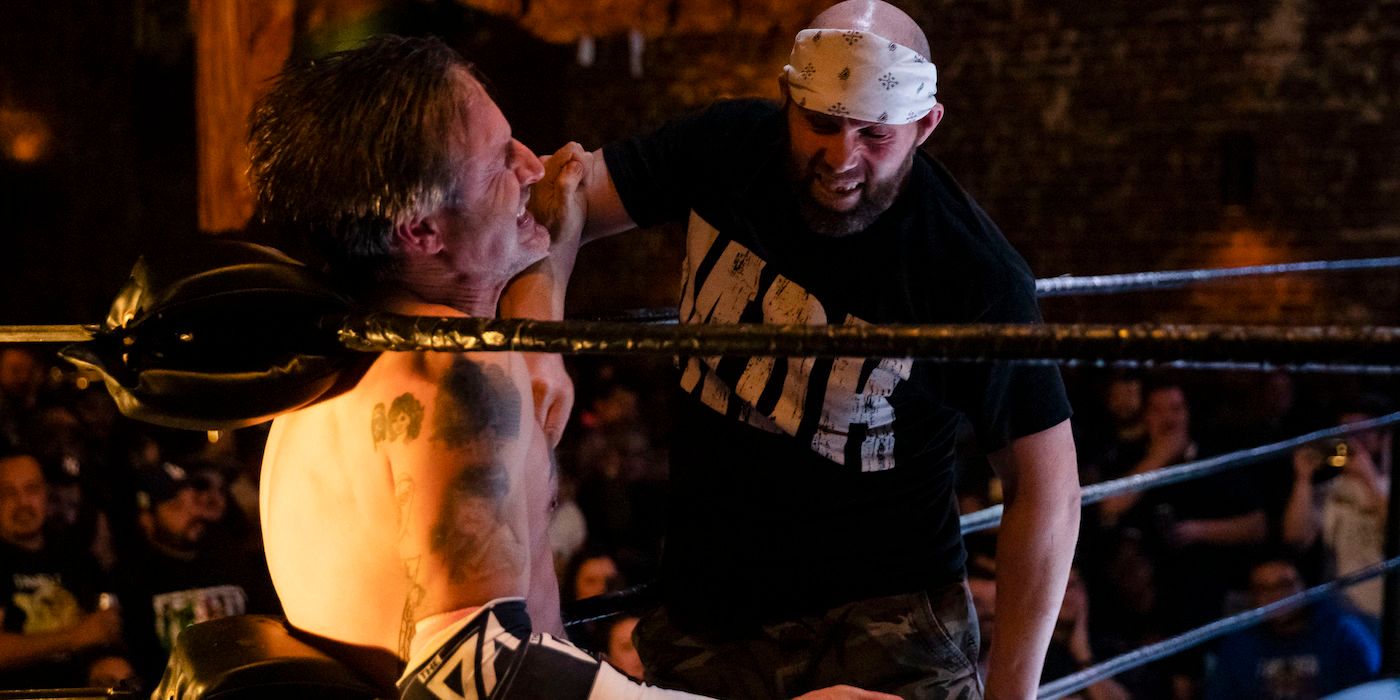You Cannot Kill David Arquette is a chronicle of the Scream actor's return to the world of professional wrestling. In the documentary, the late 40s actor tries to atone for his infamous reign as WCW World Champion in 2000. Wrestling fans loathed him for taking the championship. In spite of the fact that he's a lifelong fan and has donated the money he made in WCW to the families of late wrestlers Brian Pillman and Owen Hart, bad feelings still lingered.
Arquette hasn't made it to the big leagues of AEW or WWE (outside of a brief Twitter feud) but he has had a respectable run on the independent circuit. The film captures tell that story well but doesn't always maintain a consistent tone. It isn't the best movie, but it's a fantastic advertisement for pro wrestling.
You Cannot Kill David Arquette is best viewed as cinema's first feature-length wrestling promo. It can be seen as the wrestling business's post-COVID-19 attempt to think outside the box when creating content.
WWE and AEW's responses to the complete lack of crowds that are so vital to the performance of wrestling have included matches like the Firefly Funhouse Match between John Cena and Bray Wyatt at WrestleMania 36 and AEW's Stadium Stampede Match at the Double or Nothing pay-per-view.
Those matches weren't afraid to be absurd and even meta-textual, much to the chagrin of old school purists. You Cannot Kill David Arquette takes those qualities to another level. It revels in the absurdity of Arquette's attempt to be taken seriously by wrestling fans and the world at large.
Arquette acknowledges this early on in the film. After a photo session to create 8x10s for his first comeback appearance at a signing, Arquette has a contemplative moment. He confesses that he's tired of being seen as a joke. The film immediately cuts to him vaping on a horse while wearing the wizard's robe he donned for his photo session.
The absurdist tone of Arquette's comeback resembles the satirical Talkin' Shop pay-per-views produced by Bullet Club members the Good Brothers. Arquette's first comeback match, at a literal backyard wrestling show, mirrors the intentionally low production value and crude humor of Talkin' Shop, which also takes place in a backyard (Good Brother Luke Gallows', to be specific).
Part of the humor of Talkin' Shop is that they put familiar faces from the wrestling world into absurd, low rent situations. Talkin' Shop is a great approximation of that side of the business. Arquette's backyard trip, and subsequent street matches in Mexico, were the real deal.
The film isn't completely upbeat, however. Arquette's bloody deathmatch with hardcore wrestler Nick Gage is something that could have been straight out of Vice's look at wrestling's seedy underbelly. Arquette suffered a serious cut on his neck after being struck with a light tube.
While (understandably) shaken up, he finished the match before being taken to the emergency room. It was reminiscent of some of New Jack's infamous moments in the ring from the wrestling documentary Dark Side.
You Cannot Kill David Arquette can often be as scattershot as its subject matter. Taken as a whole, it resembles the kind of promo that Mick Foley did so well during his career. It's basically a love letter about an underdog who carved a niche for himself in pro wrestling through blood, sweat and tears.
That's a hard sell for a famous actor but Arquette pulls it off. In a triumphant scene, Arquette is accompanied to the ring by his wife Christina in full Miss Elizabeth cosplay-- it really does feel like a fan living their boyhood dream. It's a sentiment that someone with Arquette's history in wrestling really has to show, not tell. You Cannot Kill David Arquette may not be the best movie, but it perfectly captures the passion and humor of professional wrestling.




